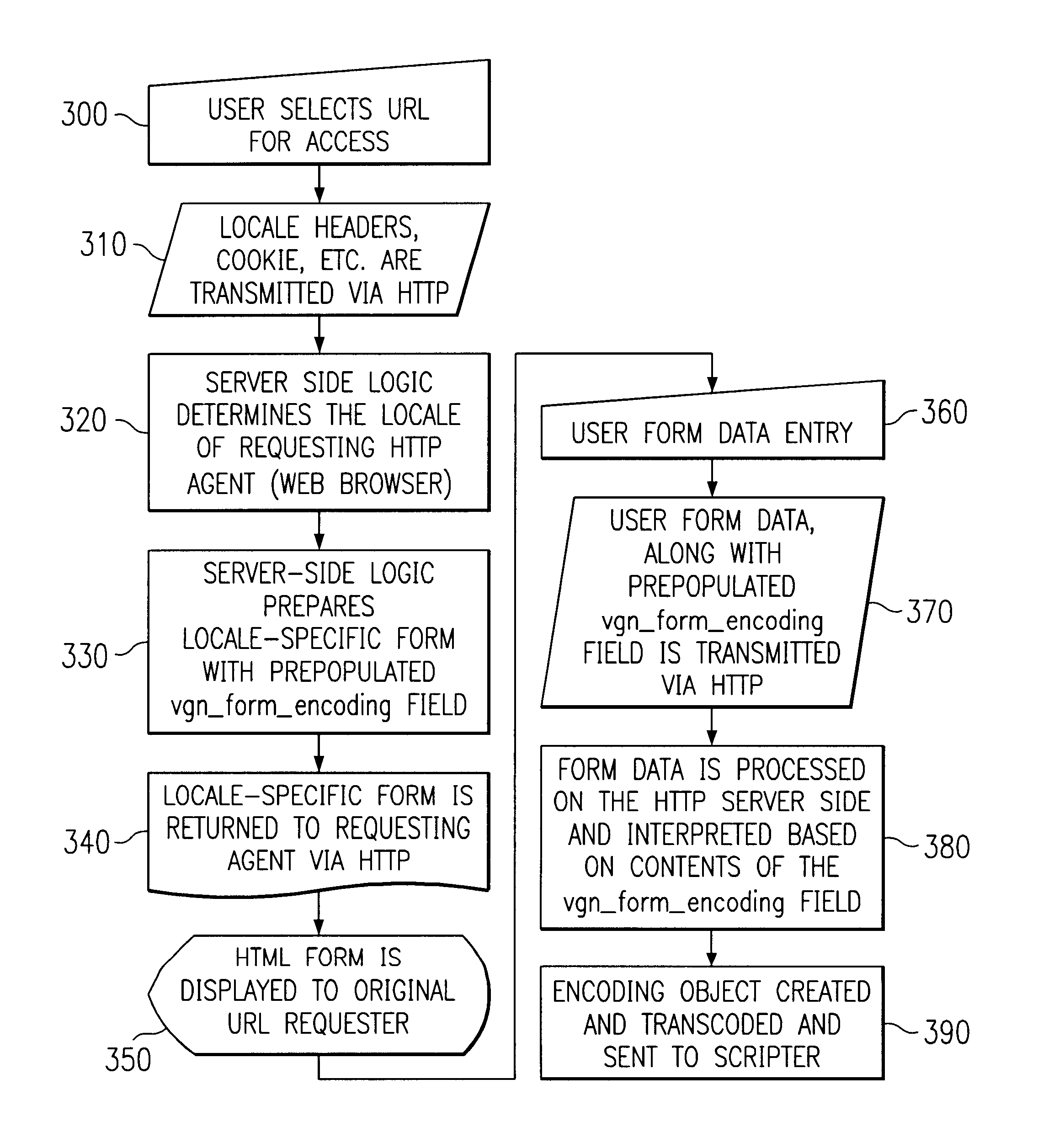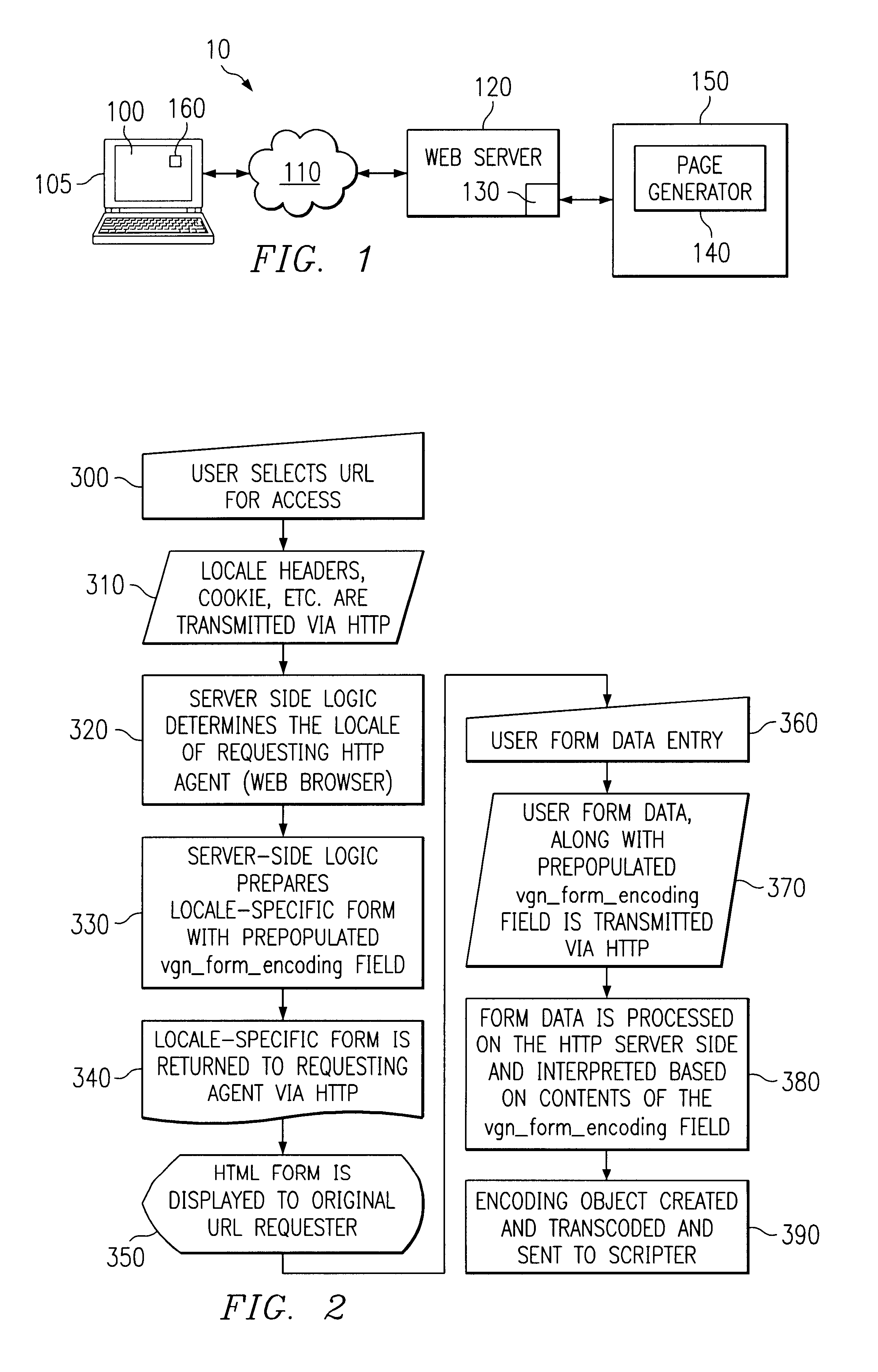Method and system for native-byte form handling
a technology of byte form and method, applied in the field of clientserver computer network operation, can solve the problems of a multi-lingual website visitor not having a clear way to reach the site, a difficult to distinguish locale-specific data, and the need of internet content providers, etc., and achieve the effect of easy differentiation
- Summary
- Abstract
- Description
- Claims
- Application Information
AI Technical Summary
Benefits of technology
Problems solved by technology
Method used
Image
Examples
Embodiment Construction
Preferred embodiments of the present invention are illustrated in the FIGUREs, like numerals being used to refer to like and corresponding parts of the various drawings.
The various embodiments of the method and system of the present invention can provide a means to detect and transmit the encoding of form data submitted by a website user and can create an encoding marker, indicating the detected encoding, that can be transmitted along with the submitted data to a content provider's back-end server(s). The back-end server(s) can detect encoding the marker to determine the data encoding and automatically transcode the data to a server encoding to generate and serve the requested content in a locale-sensitive manner to the user. Embodiments of the method and system of this invention can be used with, for example, the invention disclosed in the Locale Detection Application, as well as with cache management systems such as that disclosed in the U.S. patent application Ser. No. 09 / 965,914...
PUM
 Login to View More
Login to View More Abstract
Description
Claims
Application Information
 Login to View More
Login to View More - R&D
- Intellectual Property
- Life Sciences
- Materials
- Tech Scout
- Unparalleled Data Quality
- Higher Quality Content
- 60% Fewer Hallucinations
Browse by: Latest US Patents, China's latest patents, Technical Efficacy Thesaurus, Application Domain, Technology Topic, Popular Technical Reports.
© 2025 PatSnap. All rights reserved.Legal|Privacy policy|Modern Slavery Act Transparency Statement|Sitemap|About US| Contact US: help@patsnap.com


